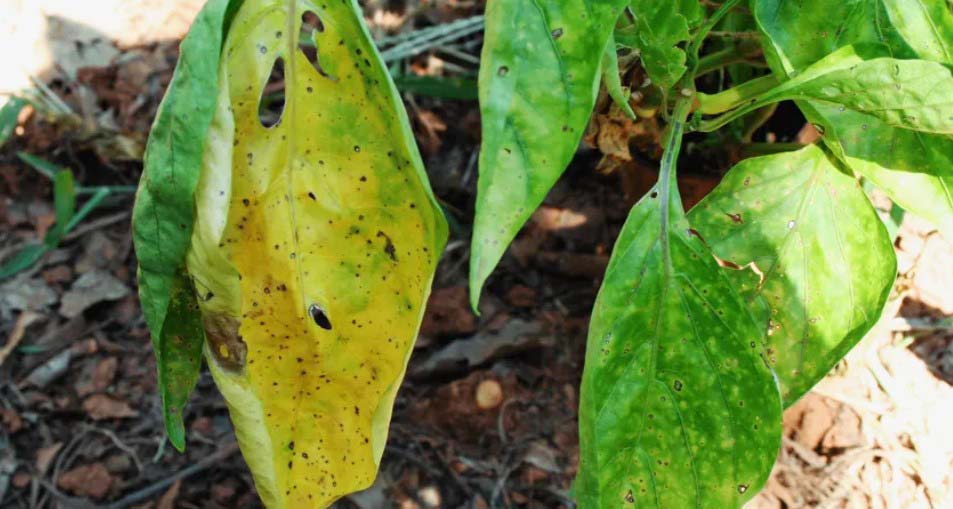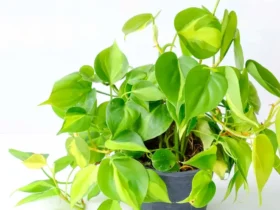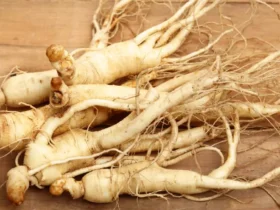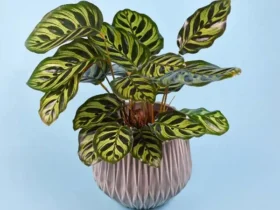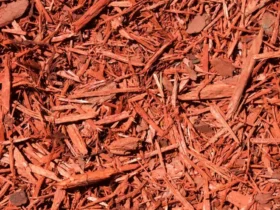Yellow leaves on pepper plants can indicate a variety of issues, such as nutrient deficiencies, pest infestations, or environmental stressors. We will explore some common causes of yellow leaves on pepper plants and provide tips on how to address them effectively.
Understanding the underlying problem and taking appropriate actions can help ensure the health and vigor of your pepper plants, ultimately leading to a successful harvest. So, let’s dive in and learn how to keep your pepper plants thriving and leafy green.
Causes Of Yellow Leaves
If you are a pepper plant lover, you may have encountered the frustrating issue of yellow leaves on your plants. It can be disheartening, but don’t worry! In this article, we will explore the various causes of yellow leaves on pepper plants and how to address them effectively.
Nutritional Deficiencies
Lack of essential nutrients can result in yellow leaves on pepper plants. This can happen due to imbalanced soil conditions or improper fertilization. Here are some common nutrient deficiencies:
- Nitrogen Deficiency: Lack of nitrogen can cause overall yellowing, starting from the older leaves. Plants may appear stunted and have reduced fruit production.
- Iron Deficiency: Insufficient iron can lead to yellow leaves with green veins. The younger leaves are particularly affected.
- Potassium Deficiency: Inadequate potassium levels can cause yellowing along the leaf margins, progressing towards the center of the leaf. The leaves may also have burned or scorched appearance.
The best way to resolve nutritional deficiencies is by conducting a soil test and providing the necessary nutrients through appropriate fertilizers or organic amendments. Consult with a local nursery or agricultural professional for guidance.

Overwatering Or Underwatering
Watering issues can contribute to yellow leaves on pepper plants. Both overwatering and underwatering can stress the plants and interrupt the nutrient absorption process. Consider the following scenarios:
| Overwatering | Underwatering |
| Signs: | Signs: |
| Browned, wilted rootsYellowing leaves with a droopy appearancePossibility of root rot | Wilting, but not browning rootsYellowing leaves, starting from the bottomLeaf edges crinkling or curling |
To ensure proper watering, check the moisture level by inserting your finger into the soil. Water only when the top inch feels dry. Avoid overwatering and make sure the container or garden bed has adequate drainage.
Pest Infestation
Pests can wreak havoc on pepper plants and lead to yellow leaves. Common culprits include aphids, spider mites, and whiteflies. Here are some signs of pest infestation:
- Aphids: Presence of sticky residue or honeydew, distorted leaves, and black sooty mold.
- Spider Mites: Tiny dots or speckles on leaves, fine webbing, yellowing, and eventual browning of leaves.
- Whiteflies: White insects flying around the plants when disturbed, yellowing leaves, and curling or wilting foliage.
To tackle pest infestations, use organic insecticidal soaps or neem oil. Regularly inspect the plants, removing any affected leaves or physically removing the pests if possible. Introducing beneficial insects such as ladybugs can also help control pests naturally.
Disease Or Fungus
Various diseases and fungi can result in yellow leaves on pepper plants. Here are a few common ones:
- Bacterial Spot: Formation of small, water-soaked spots on leaves, which turn brown with yellow halos.
- Leaf Mold: Development of yellow patches or irregular discoloration on the leaves.
- Verticillium Wilt: Yellowing and wilting of lower leaves, followed by overall plant decline.
To prevent and manage diseases, ensure adequate plant spacing, good air circulation, and avoid overhead watering. If necessary, use fungicides labeled for pepper plants, following the instructions carefully.

Troubleshooting Tips
When it comes to troubleshooting yellow leaves on pepper plants, there are several tips you can follow to help identify and address the underlying issues. By taking proactive steps, such as proper fertilizing, watering techniques, integrated pest management, and disease prevention, you can promote healthy growth and vibrant foliage in your pepper plants. Let’s delve deeper into these troubleshooting tips:
Fertilize Properly
Proper fertilization is essential for maintaining the health of your pepper plants. Before applying any fertilizer, it is crucial to test the pH level of the soil. Aim for a pH level between 6.0 and 7.0, which provides an optimal environment for nutrient uptake. When applying fertilizer, choose one specifically formulated for vegetable plants to ensure the right balance of nutrients.
Watering Techniques
Proper watering techniques play a significant role in preventing yellow leaves on pepper plants. Ensure the soil is consistently moist but not overly saturated. Overwatering can lead to root rot and nutrient deficiencies, while underwatering can cause stress and leaf discoloration. One effective method is to water deeply and infrequently, allowing the top inch of soil to dry out before watering again.
Integrated Pest Management
Pests can wreak havoc on pepper plants, leading to yellowing leaves and stunted growth. Implementing integrated pest management can help combat these intruders effectively. Start by regularly inspecting your plants for signs of pests, such as aphids or spider mites. Manual removal can be utilized for smaller infestations, while organic insecticides can target larger pest populations. Additionally, introducing natural predators like ladybugs or lacewings can help control pest populations.
Disease Prevention
Preventing diseases is crucial in maintaining healthy pepper plants. Keep an eye out for common diseases such as bacterial spot or powdery mildew. To minimize the risk of these diseases, ensure proper air circulation by providing appropriate spacing between plants. Remove any infected or yellowing leaves promptly and avoid overhead watering, which can promote the growth and spread of fungal diseases. Applying a preventative copper-based fungicide may also provide an extra layer of protection.

Preventing Yellow Leaves
If you’ve noticed yellow leaves on your pepper plants, it’s essential to take action promptly to prevent further damage. Yellow leaves can indicate a variety of issues, including nutrient deficiencies, dehydration, pests, or diseases. By implementing the following preventive measures, you can help your pepper plants thrive and maintain healthy foliage.
Proper Nutrient Management
One of the primary factors leading to yellow leaves is nutrient deficiency. Poor soil quality or inadequate nutrient uptake can hamper the plant’s overall health. To ensure your pepper plants receive the necessary nutrients:
- Conduct a soil test to determine any nutrient imbalances or deficiencies.
- Select a high-quality, balanced fertilizer containing the essential macronutrients (Nitrogen, Phosphorus, and Potassium).
- Fertilize your plants according to the recommended dosage and schedule.
- Consider using organic fertilizers or compost to improve soil fertility naturally.
Optimal Watering Practices
Watering your pepper plants correctly is crucial to prevent yellowing of leaves due to dehydration or root-related issues. Follow these watering practices:
- Water your pepper plants deeply and infrequently, allowing the soil to dry slightly between each watering session.
- Avoid overwatering, which can lead to root rot and nutrient leaching, causing yellow leaves.
- Monitor the moisture levels by regularly checking the soil moisture with your fingers.
- Consider using mulch around the pepper plants to retain soil moisture and prevent weed growth.
Regular Inspections
Regularly inspecting your pepper plants allows you to spot any early signs of problems and take appropriate action. Here’s what you should do:
- Thoroughly examine the leaves, stems, and underside of leaves for any discoloration, spots, or pests.
- Look for signs of pests, such as aphids, mites, or caterpillars, and promptly address any infestations.
- Remove any yellow or diseased leaves promptly to prevent the spread of diseases.
- Trim back any overcrowded branches to improve air circulation and reduce the risk of fungal infections.
Hygiene And Sanitation
Practicing good hygiene and sanitation measures is essential for maintaining healthy pepper plants. These steps can help prevent yellow leaves:
- Regularly clean your gardening tools, including pruning shears, stakes, and pots, to prevent the spread of diseases.
- Remove any fallen leaves or plant debris from the growing area to minimize the risk of pests and diseases.
- Disinfect your pots or containers before reusing them to eliminate any pathogens that may be present.
- Wash your hands thoroughly before and after handling your pepper plants to prevent the transmission of diseases.
Frequently Asked Questions Of Yellow Leaves On Pepper Plants
How Do You Fix Yellow Pepper Leaves?
To fix yellow pepper leaves, first identify the cause, which could be disease, pests, nutrient deficiencies, or environmental issues. Take appropriate steps like treating with organic fungicide or pesticide, providing proper nutrients, adjusting watering and sunlight conditions, and removing infected leaves.
Regular monitoring and care are key.
What Does An Overwatered Pepper Look Like?
Overwatered peppers appear wilted, with yellowing leaves and droopy stems. The soil may be soggy and have a musty smell. Excess watering can lead to root rot and inhibit nutrient absorption, causing stunted growth.
How Do You Fix Yellow Leaves?
To fix yellow leaves, identify the potential causes such as under or over watering, nutrient deficiencies, or pest infestation. Adjust watering habits, provide appropriate nutrients, and treat pests accordingly. Consulting a gardening expert or using online resources can help you determine the best course of action.
Conclusion
Yellow leaves on pepper plants can be indicative of various issues, including nutrient deficiencies, diseases, pests, or environmental factors. By observing the symptoms and addressing the underlying cause promptly, you can ensure the optimal health and growth of your pepper plants.
Remember to provide proper watering, adequate sunlight, and regular fertilization to maintain vibrant and healthy foliage. Stay vigilant and take necessary measures to keep your pepper plants thriving throughout the growing season.
